The principle of operation of a typical dishwasher: design, main components, operating rules
There are a lot of PMM models for the kitchen. Moreover, each manufacturer of dishwashing equipment strives to stand out from the rest: some add various sensors to the design of the dishwasher, while others add new units with additional functions.
But, regardless of the brand, the general principle of operation of a household-class dishwasher is the same. The main working units are similar in technology under different trademarks. How is the dishwasher arranged and by what principle? We will analyze these issues in detail in this material. We also consider the basic recommendations for the use of dishwashing equipment.
The content of the article:
Dishwasher components
Most of the automatic dishwashers now offered in stores are models built into the kitchen set with frontal (vertical) loading of dishes. Such a technique simplifies the life of a housewife as much as possible.
I put dirty cutlery in the machine, pressed the button - and after a while the spoons, forks and plates were clean again.

For the dishwasher to work properly and to wash the dishes thoroughly, the machine needs water that regenerates salt and detergents. At the same time, water jets must have a set temperature, the salt composition must meet the requirements for NaCl purity, and liquids and washing tablets should be suitable for a particular model.
Each dishwasher assembly is responsible for its part of the dishwashing process. If the heater does not sufficiently heat the water, the pump does not fully pump it, and the ion exchanger or filters get clogged, then the dishes will remain dirty. You have to get up to the sink and finish the work of the machine manually. But then why bother buying a dishwasher?
The main components of household PMM
The following units are located in the small dishwasher housing:
- Circulation pump for water supply.
- Drain pump for pumping sewage into the sewer.
- Resin ion exchanger to soften hard water.
- Instantaneous water heater (heating element with safety thermostat).
- Temperature and liquid level sensors inside.
- Filter for cleaning drains from food debris.
- The filter for cleaning the water supplied to the machine.
- Internal washing chamber with several baskets for different dishes.
- Upper and lower sprinklers (rocker arms with nozzles).
- Display and operation mode selection panel.
- Control block.
Plus, some of the models are equipped with a heat exchanger, and partly with a fan for drying washed dishes.
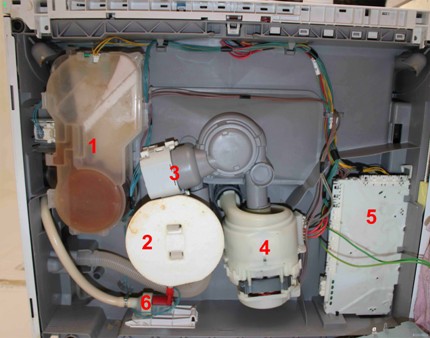

The chamber for dishes is made of stainless steel. To reduce noise, a rubber gasket runs along the contour of the hatch door. Cutlery trays made removable. This allows you to place inside the dishwasher not only small dishes, but also more pans or pans.
On the door is a container for detergent (liquid, powder or tablets). Another tank is placed at the bottom of the chamber - this is for the regenerating salt in the ion exchanger.
On the front of the dishwasher there are machine status indicators or a display, as well as a touch or mechanical control panel. The display-touch option is the most convenient to use, but also the most expensive. At the same time, simpler mechanics in the form of a round handle will serve in the vast majority of cases much longer.

Also included in a typical dishwasher kit:
- power cable;
- dirty drain and clean water hoses;
- shelves, baskets and trays for utensils.
Special salt and detergent compositions are consumables. They do not come in the kit, but without them, the dishwasher should not be turned on.
With water alone, dishes should not be washed well. Plus, the automatic dishwasher is initially configured for the presence of these funds inside. If they are not there or they are not enough, then the machine will not work, the protection will work. Recommendations on choosing the most effective dishwasher we have given in this publication.
Additional elements and devices
PMM is controlled by the corresponding automation unit. It provides signals to the pumps, the heater and the valve. However, he needs sensors that monitor what is happening inside the working equipment. And here, each manufacturer himself determines the desired set of sensors.
One sensor in the car is always there - this is a water temperature meter. Without it, it is impossible to maintain proper temperature in the washing chamber. Plus, he also makes sure that the heater does not overheat.
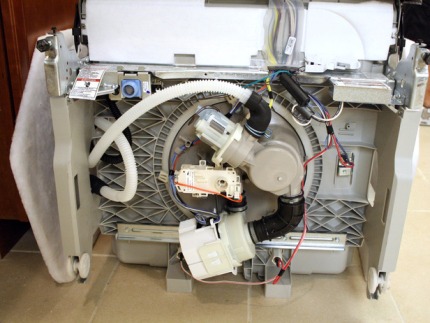
All these sensors are needed to increase the efficiency of the automatic PMM. The more the control unit knows about what is happening inside the chamber with the dishes, the better it is able to choose the washing mode.
How is drying in a dishwasher implemented?
Another additional unit is associated with the drying of washed cutlery. Almost all models of such machines suggest the presence of such a function. Only the most inexpensive options go without this option.
To dry dishes, the dishwasher is equipped with:
- heat exchanger;
- heating coil fan;
- block with zeolite.
The first option is a plastic tank inside the PMM. It is filled with cold water and, due to the simplest heat transfer processes, relieves the chamber of excess moisture when necessary.
After washing, the water begins to evaporate from the dishes and settle in the form of condensate just on this heat exchanger and the inner walls of the washing machine. The process is quite lengthy, but such a unit does not require electricity for operation.
The second option is volatile, but it dries dishes much faster. However, the spinning fan is a little noisy. When choosing a dishwasher, you need to look with it so that the seal on the hatch performs not only the functions of preventing leaks, but also noise insulation. The lid should close as tightly as possible.
The third option is a new generation of the latest generation, which is not yet available for all manufacturers in the lineup. The mineral zeolite, when absorbed, warms up and releases heat in the form of dry heated air.
This hot air stream is also used for drying washed kitchen utensils. Such a technique consumes almost a third less electricity than an analogue with a fan. Moreover, zeolite is not required to be changed or added. He himself is gradually recovering and getting rid of excess moisture.

Dishwasher manufacturers are constantly adding new options to their models to attract customers. The search for solutions to improve the efficiency of this technique is ongoing. Moreover, the more such additional modules, the greater the likelihood of PMM failure.
Each of the main working nodes we examined in more detail in our article: The device is a typical dishwasher: design, purpose and maintainability of various parts.
Importance of Salt Exchanger
It is necessary to distinguish between detergent and regenerating sodium salt for PMM. These are two different compounds that are poured into different containers of the dishwasher. “Soap” goes into the tank on the lid, and “sodium” is poured into the container at the bottom of the washing chamber.
There are also all-in-one tablets. They are placed in the compartment on the hatch of the machine and already contain the necessary volumes of saline. But if the tap water is very hard, with a high content of magnesium and calcium, then it will be difficult to do without salt specially designed for the ion exchanger. PMM without it in such a situation will inevitably and rather quickly break down.

PMM has an ion exchanger with a resin consisting of sodium chloride NaCl. All the flow coming from the water supply for washing first passes through this unit, where calcium and magnesium in the water are replaced by sodium ions. As a result, the formation of scale on the parts of the dishwasher and stains on the dishes is eliminated.
Gradually, Na is washed out of the ion exchanger and must be replaced with a new portion. Moreover, you can not use a regular food analog for this. In extreme cases, the use of coarse crystalline salt of the EXTRA group is acceptable. But it is best to use only formulations specially prepared for dishwashers with a NaCl content of more than 99%.
Salt flow rate is determined by the settings of the dishwasher. In many PMM models, this process must be adjusted manually using a special table. Moreover, during further operation it will be necessary to constantly monitor the composition of the water and adjust the adjustment.
To save yourself from such a routine, immediately when buying, choose a technique with a stiffness sensor.So the machine will adjust itself, and the consumption of NaCl will be as economical as possible. More recommendations for choosing a dishwasher we brought here.
The principle of operation of the dishwasher
To understand how the dishwasher works inside, you do not need to have special knowledge in high sciences. The work of an automatic dishwasher is based on the principle of a phased process - first one cycle is performed, then the second, third, etc., and at the end clean cutlery is taken out of the machine.

Washing dishes in the PMM takes place in four stages:
- Pre-soaking (washing off large food debris).
- The main wash cycle.
- Rinse.
- Drying.
First, large leftovers are removed from the surface of the dishes. Then the temperature in the PMM rises and the main wash begins with the addition of detergents. This happens cyclically - the collection and heating of water, spraying it through the chamber, draining into the drainage. The number of repetitions of this process depends on the selected wash mode. We talked more about the washing cycle and the duration of the main modes in this stuff.

At the end, the dishes are rinsed with clean water and dried. If the machine comes with a heat exchanger, then the last step may take several tens of minutes. With a drying fan or zeolite module, this is much faster.
To water washed all parts of the dishwashing dish without exception, the sprinklers constantly rotate during operation. On these rocker arms there are several nozzles directed to the sides at different angles. The more nozzles on them and, accordingly, the jets in the chamber, the faster and more thoroughly the cutlery is washed.
Rules for operating a household dishwasher
Tablets, liquids, and powders intended for dishwashers contain a minimum of foaming components. The abundance of foam only harms the process of washing dishes in the PMM. The smaller it is, the better. Therefore, you can not use ordinary soap or anything like that in the dishwasher.

Not all cutlery is allowed to wash in the PMM. Drying with hot air is contraindicated in plastic. A plate from it will at least soften, and may “leak” with plastic drops. In the latter case, the machine is likely to instantly fail.
Glasses and cups should be stacked upside down in the basket. So it will be easier to get into the jets from the sprayers, plus most of the water drains from them by gravity.
And most importantly - nothing should interfere with the movement of the blades with nozzles. This will result in either beating the dishes or breaking the sprinklers. Detailed recommendations on the operation of the dishwasher we have given in another our article.
If leftover food remains at the bottom of the washing chamber, this indicates a clogged drainage filter. It needs to be cleaned regularly. But the less large pieces of food will remain on the dishes, the less often it will have to be removed and washed, so it is better not to be lazy initially and carefully remove large leftovers from the plates.
Did you find that your dishwasher is clogged? In this case, we recommend that you familiarize yourself with cleaning tips do it yourself.
Conclusions and useful video on the topic
To understand the details of the dishwasher, see the video below. We specially selected them to simplify your understanding of the principles of the PMM.
The clip clearly demonstrates the design features of the dishwasher:
The principle of operation and analysis of typical PMM modes:
The video introduces the main working nodes of the dishwasher:
It’s easy to figure out how PMM works and works. This knowledge will help in choosing the right dishwasher, will help to avoid blunders during its operation. And also information on the design of the dishwasher will be useful if you need a quick replacement of parts or have to find out on your own breakdown reasons automatic machine.
Do you have questions about the design of the dishwasher or one of its working units? Please clarify all the nuances of our experts in the comments section.
If you want to supplement the information presented by us in this article, write your comments in the block below.

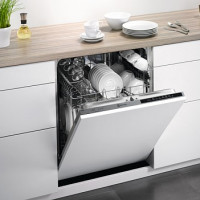 The device is a typical dishwasher: the principle of operation and the purpose of the main nodes PMM
The device is a typical dishwasher: the principle of operation and the purpose of the main nodes PMM 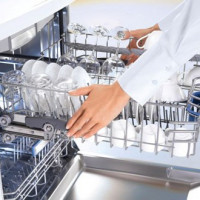 How to use a dishwasher: rules for use and care of the dishwasher
How to use a dishwasher: rules for use and care of the dishwasher  How to use a Bosch dishwasher: rules and nuances of operation
How to use a Bosch dishwasher: rules and nuances of operation 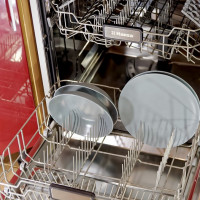 Hansa ZIM 476 H dishwasher overview: functional assistant for one year
Hansa ZIM 476 H dishwasher overview: functional assistant for one year 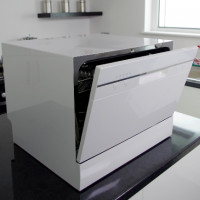 Desktop dishwashers: an overview of the best models + rules for choosing dishwashers
Desktop dishwashers: an overview of the best models + rules for choosing dishwashers 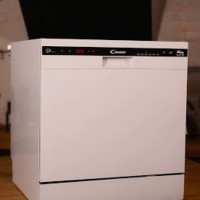 Candy CDCF 6E-07 dishwasher overview: is it worth buying a miniature
Candy CDCF 6E-07 dishwasher overview: is it worth buying a miniature  How much does it cost to connect gas to a private house: the price of organizing gas supply
How much does it cost to connect gas to a private house: the price of organizing gas supply  The best washing machines with dryer: model rating and customer tips
The best washing machines with dryer: model rating and customer tips  What is the color temperature of light and the nuances of choosing the temperature of the lamps to suit your needs
What is the color temperature of light and the nuances of choosing the temperature of the lamps to suit your needs  Replacement of a geyser in an apartment: replacement paperwork + basic norms and requirements
Replacement of a geyser in an apartment: replacement paperwork + basic norms and requirements
When we chose a dishwasher, then I theoretically “savvy” the Internet on the subject of basic options and functions. The store already knew exactly which models I would consider, and which should not be wasted time. Sellers, by the way, do not really like customers who know exactly what they came for))) So. I took it home and strongly recommend that anyone who will look after themselves for PMM choose from models that have a half-load function. This is especially true for small families, where 2-3 people. There is no desire or time to wash by hand, and using the full potential of a dishwasher for two or three sets of dishes after dinner is also extremely unreasonable and uneconomical. And it is the half load function that saves the situation. The machine “knows” that there is not enough utensils in it, and does not consume water and electricity at full power.
Thanks Dayan! It so happened that we didn’t have much choice ... We decided to use the bachelor method! :-)) Until the dirty dishes hit the sink tap !!! :-))
While we are in the process of installation ... As we test, we will give you a telegram! :-)) Thank!